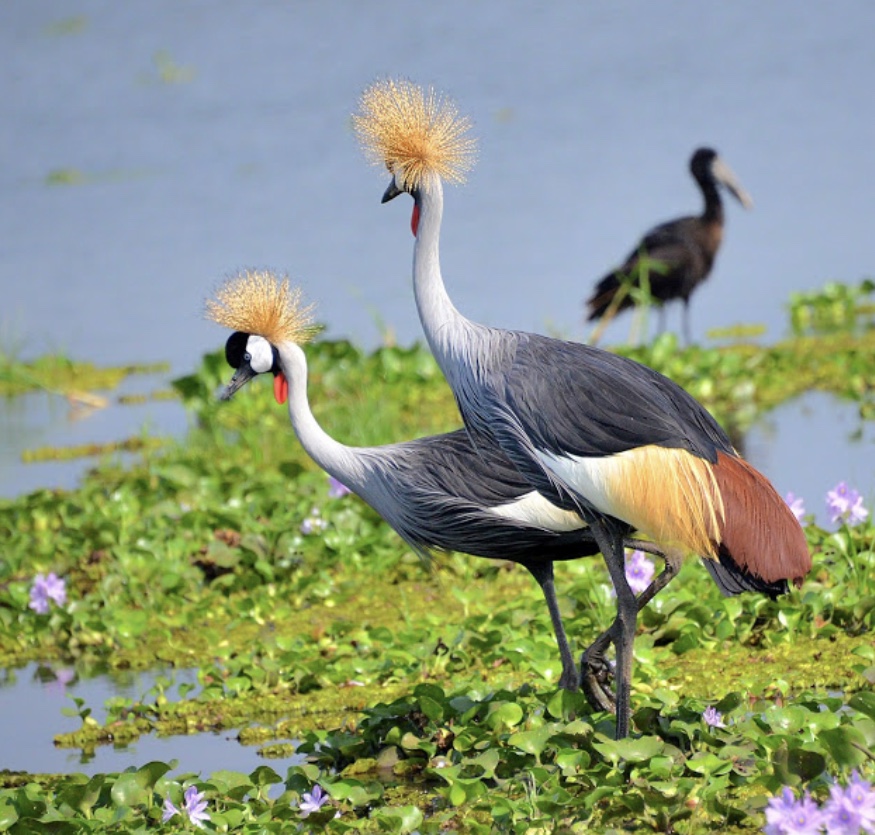
The Crested Crane – chosen as Uganda’s Crest (national symbol) nearly 100 years ago, is one of the most cherished birds in the country. The Grey Crowned Crane, scientifically known as Balearica regulorum gibbericeps, inhabited Uganda’s swamps and fields long before the coming of tribes in our territory.
History
The unusual gracefulness of the Crowned Crane, aptly typifying the country and its people, attracted then Governor of Uganda –Sir Frederick Jackson who, in 1893, chose it to embellish the Union Jack with its exquisite form and heraldic dignity.
Sir Frederick was a famous ornithologist who surrounded himself with the beautiful cranes at the government House in Entebbe which he could feed from his own hands.
It is estimated that number of Grey Crowned Cranes in Uganda has reduced from more than 70,000 in 1970s to less than 10,000 in 2011. The global threat status declined from near-threatened to vulnerable to endangered in less than five years, and indication of global concern on the survival of Cranes in the region.
The ban on massive reclamation of wetlands of 1986 did give some relief to wetlands and Cranes but recent impunity in wetland reclamation could drive the species to extinction.
Partner for life
Crested Cranes practice what is called “monogamy” meaning that once they find a partner they will remain with that same breeding partner for life.
They form pair bonds while they are young and will remain with the bird they bond to for the rest of their lives, breeding together each year and raising their young together. The advantage of this adaptation is not entirely understood, but it is cute.
Omnivores
Their food consists of plant and animal matter including grass and sedge seeds, millet, rice, peas, corn, mollusks, crustaceans, insects (grasshoppers and flies), fish, amphibians and reptiles. They feed by rapidly pecking at food but they sometime uproot plants and rarely dig. They prefer seed heads of grasses and sedges.
Eco systems
Since seeds are a major staple of their diet they spread the seeds in their droppings, inadvertently carrying them elsewhere so the foliage can spread. The cranes also serve to keep populations of bugs in check by eating them wherever they go.
Crowned Cranes are known to breed in swamps but a combination of increasing human population and improved agricultural techniques is leading people to drain swamps often to grow rice in eastern Uganda, dairy farming and vegetable cultivation in south western Uganda. Eastern and south-western Uganda are the major critical areas for the survival of the Crane.

